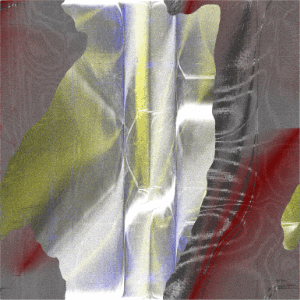“This is not a dystopian album. It’s an anti-dystopian album.” You might be wondering, as I did when I first read that line, how an album can be anti-dystopian. But once I listened to Terra Ephemera a few times, I felt like I understood what Everyday Dust and [MIIIIM] meant by those words.
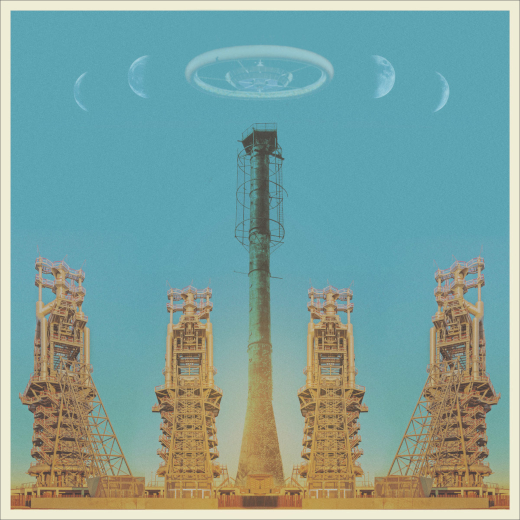
The skeletal remains of our existence
Through the title, album art, and their notes on Terra Ephemera, Everyday Dust and [MIIIIM] implore listeners to pay attention. Their album notes open with the following:
“This fragile rock that we call home is in trouble and we need to listen to her cry for help. The polar ice caps are melting yet elsewhere temperatures are soaring to unnatural heights. What is going on? Is there no going back? Has everything changed? Where is home? What is home?”
The album art evokes a desiccated ruin of some industrial triumph; a towering monument to hubris. The skeletal remains of our existence here. The word ephemera brings with it a vague understanding of impermanence, but the word itself is an interesting choice. Ephemera literally means something insignificant or of a quickly passing significance—the kind of thing that really matters for a fleeting moment, but whose usefulness or relevance burns out quickly. The word’s semi-modern use originates in medieval medicine; it referred a fever that burned out in a day. In combination with terra, we get a combination of Latin and Greek that can mean several things: Earth in passing, Earth lasting for a day, Earth sick with fever.
On a cosmic scale, our little rock is certainly ephemeral. It’s an infinitely small thing in an infinite cosmos. Our presence on this rock is also ephemeral. The history of our species is little more than a blip on the calendar the planet’s been keeping. But we’ve had an outsized impact on our rock in the time we’ve called it home. And that’s what Everyday Dust and [MIIIIM] are calling our attention to with Terra Ephemera. The rock itself will continue revolving around the sun for 50 billion years. But in our cosmic microsecond of existence, we’re making sure it’ll be more or less inhabitable for any future creatures lucky enough to develop cognition to appreciate the wonder that is the act of appreciating wonder.
But what’s special about the Terra Ephemera (and I promise I’m getting to the actual music review here in a moment) is that it does not evoke hopelessness or defeat. It’s actually kind of uplifting. In fact, the final statement the artists make in their album notes says as much.
“This is not a dystopian album. It’s an anti-dystopian album.”
You might be wondering, as I did when I first read that line, how an album can be anti-dystopian. But once I listened to Terra Ephemera a few times, I felt like I understood what Everyday Dust and [MIIIIM] meant by those words.
Your winged shadow sliding on its surface
The album begins with “Buried at Sea,” which opens with sounds like alarms but quickly fades into a few lilting synth melody before giving way to the hi-hat and brushed snare combination that makes up the bulk of the percussion on the tune. The rhythm formed by the looped snare and hi-hat fall over the chord progression like waves, and when the synths begin to build again they bury the waves far below us, and soon we’re soaring above a cinematic soundscape. If you close your eyes, you might see deep blue water beneath you and all around, as far as the eye can see, your winged shadow sliding on its surface as you search for signs of life. But that ocean is breathing beneath you and you realize it’s alive, too.
“Owl Cave” is my favorite track on Terra Ephemera. It opens with a cool delayed and arpeggiated melody that makes the climbing and falling melody a kind of big chord while the noise of the previous track clears. Once there is silence beside the main melody, a strange triple-hit bass drum brings in the minimal percussion and a beautiful set of symphonic grooves play out that I can’t help but nod my whole upper body to. It’s mellow but, again, there’s hopefulness in the melodies. These major chord progressions, occasionally punctuated by dissonance (someone with more music theory knowledge than I have, please educate me on what those note relationships are) imbue the whole piece with the essence of flight, like “Buried at Sea,” but unlike it, too. At about the 7:30 mark, the piece crescendos with another arpeggiated melody that is climactic and bright. When I listen to it on over-the-ear headphones, it gives me chills.
Hollow tones that sound like found instruments made of technological detritus
“Karuna, Karuna / Point of No Return” is a bit darker—with hollow tones that sound like found instruments made of technological detritus opening the track. But when the rhythm section kicks in, the sound transforms into a dance. The percussion drives forward like flamenco, undercut by hollow sonic vibes that sway under it, always reminding you that this is something that grew from the ashes something else. Halfway through, the composition changes and a new voice enters, driving the main theme away. It’s like a chorus of alien voices heard through water, until an unintelligible voice, deep and foreboding, talks over them all and a slight tension pulls at the threads of the music, and the piece decomposes.
The halfway mark of the record is “Open Sesame,” which has a driving, almost tribal feel to it. The bass line is accompanied by minimal melodic twinkles, but the tune is in constant motion. Elements come in for one or two bars before vanishing, sometimes reappearing in a different context.
“Hiraeth” is a Welsh word that apparently defies translation, but homesickness is close to what it means (I had to look it up). The track with that name suggests a kind of melancholy that might be a longing for home—woodwindy sounds echoing over glitches and tin-sheet thunderclaps flowing into another driving rhythm and bass segment that lets a bit more of the darkness in. But even with that darkness, there’s a climbing energy that suffuses the track, and it ends with an epic bit of synthwave goodness.
The second to last track, “Embers Glowing,” echoes some of the alarm-sound vibe of the album’s opening, but it quickly shifts gears to a minimally percussive and strange (in a good way) tune.
The album closes with “Excess,” which I think is apt given the theme of the album. Excess is what drove the changes to the planet’s climate. It’s almost a pity that such lovely piece of music should have that association, but the excesses were not ugly things in and of themselves, were they? They were the things that gave us the modern world, and they were driven by creating enormous amounts of value for people. Food, travel, the modern world in its entirety is pretty remarkable, and it is built on certain excesses. The reality is that we probably can’t part from those things we associate with modernity, but maybe we can look at them, and how we achieve them, another way. Maybe that’s what “Excess” is about. Or maybe it’s just a beautiful closing track to an excellent record by two great musicians.
One very important thought
One more thought before I close: most of this record, for some reason, conjured visions of Hayao Miyazaki’s Nausicaä of the Valley of the Wind. So much of the scenery I imagined was lifted almost wholly from that film. I’m going to do an experiment and watch it on mute with Terra Ephemera playing on a loop in the background. I’m sure they’ll fit together beautifully.
Terra Ephemera is available on Sparkwood.






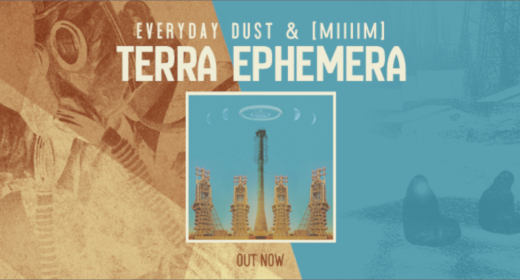




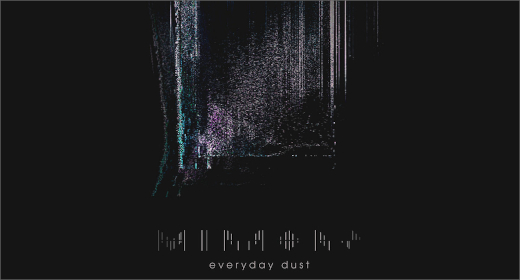
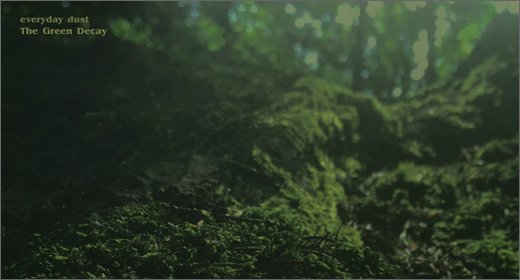
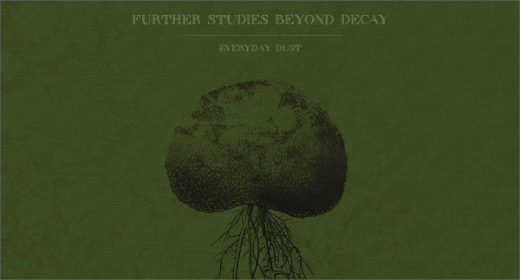
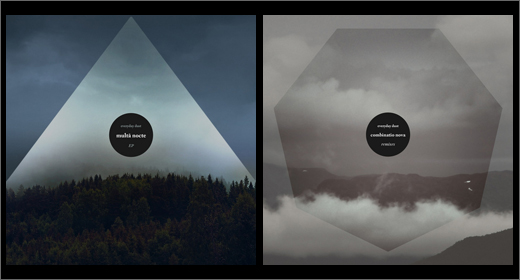
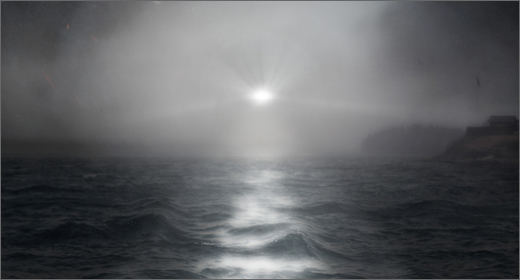

![Pole :: Tempus Remixes (Mute) — [concise]](https://igloomag.com/wp/wp-content/uploads/2025/04/pole-tempus-remixes_feat-75x75.jpg)






![Hasbeen :: Bunker Symphonies II (Clean Error) — [concise]](https://igloomag.com/wp/wp-content/uploads/2025/04/hasbeen-bunker-symphonies-ii_feat-75x75.jpg)
